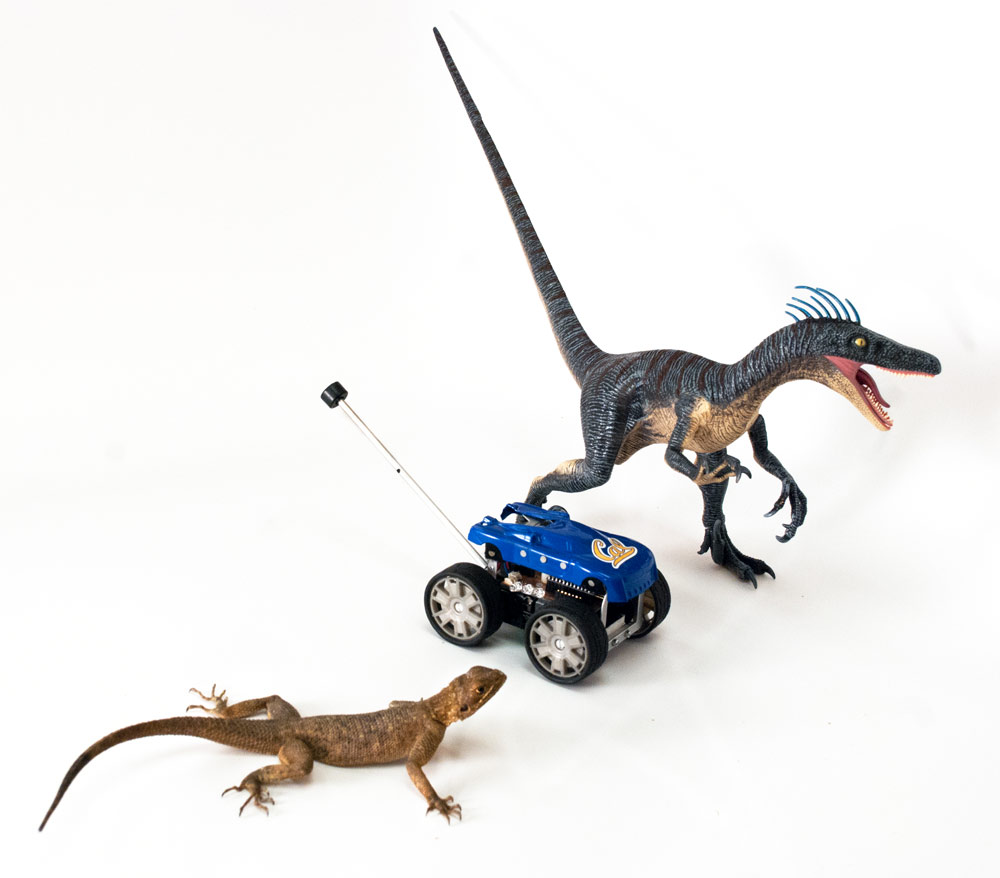Acrobatic Velociraptors May Inspire New Generation of Agile Droids

Meat-eating dinosaurs like Velociraptor may have been quite the acrobats, using their tails to land aerial maneuvers safely, say scientists studying today's leaping lizards.
Long-tailed robots built as part of this work could help inspire a new generation of maneuverable search-and-rescue droids, the researchers add.
More than 40 years ago, scientists proposed that Velociraptor and other predatory dinosaurs used their tails to stabilize their bodies during jumps or similar rapid or irregular movements, helping make them active, agile hunters. The idea is that the raptors used their tails much as tightrope walkers use balancing poles — tightrope walkers tilt the poles to make their bodies lean in the opposite direction of the tilt, and the thought was that the extinct reptiles bent their tails to control the orientation of their bodies as they leapt.
Researchers have since found that swinging appendages can help lemurs, cats, kangaroo rats and even humans with their walking and acrobatics. However, while some studies suggested the same apparently holds true for geckos during climbing and gliding, others hinted that lizards that had lost their tails might not only experience no change in performance, but actual improvements, calling into question the idea that tails are useful for balancing.
To address this controversy, scientists analyzed red-headed Agama lizards (Agama agama), which are very good jumpers and are notably capable of landing safely. The scientists shot video of the reptiles making running leaps toward a vertical wall. The horizontal platforms they jumped from had varying surfaces, from slippery to sandpaper-like.
The investigators found the lizards swung their tails to correct for errors made at launch. For instance, slippery surfaces made their feet skid, but the reptiles corrected for such anomalies with appropriate tail movements in mid-air.
To help confirm their findings, the scientists produced a lizard-size wheeled robot named "Tailbot" that had an aluminum tail and could leap like a ski jumper from a ramp. During each jump, the robot's front wheels, which left the ramp first, started falling while the rear ones were still on the ramp, causing the machine to tilt downward. To avoid a nosedive into the landing pad, Tailbot corrected the angle of its body before landing by using tail movements controlled by feedback from an onboard gyroscope. [See photos of leaping lizards & robots]
Get the world’s most fascinating discoveries delivered straight to your inbox.
The researchers developed mathematical models allowing them to predict the effectiveness of different tails at balancing bodies. Their work suggested that Velociraptor mongoliensis, a 5-foot (1.5-meter) tall, 45-lb. (20-kilogram) predator, might have been capable of aerial acrobatics beyond those of even the most agile modern lizards.
"Animals show us that by moving appendages effectively, the control of the body can be simplified," researcher Robert Full, an integrative biologist at the Universityof California, Berkeley, told LiveScience.
When it comes to potential robotic applications for this work, "inspiration from lizard tails will likely lead to far more agile search-and-rescue robots that can deal with the rubble often found resulting from a disaster," Full said. "Legged robots will also have a greater capability to more rapidly detect chemical, biological or nuclear hazards that might occur in a subway or populated area."
As to why past studies found that tailless lizards might not suffer any changes in performance, "they may not have problems running on level, smooth ground with no perturbations, but that is not the case on rough terrain or during a perturbation," Full noted.
The scientists detailed their findings online Jan. 4 in the journal Nature.
Follow Live Science for the latest in science news and discoveries on Twitter @livescience and on Facebook.




